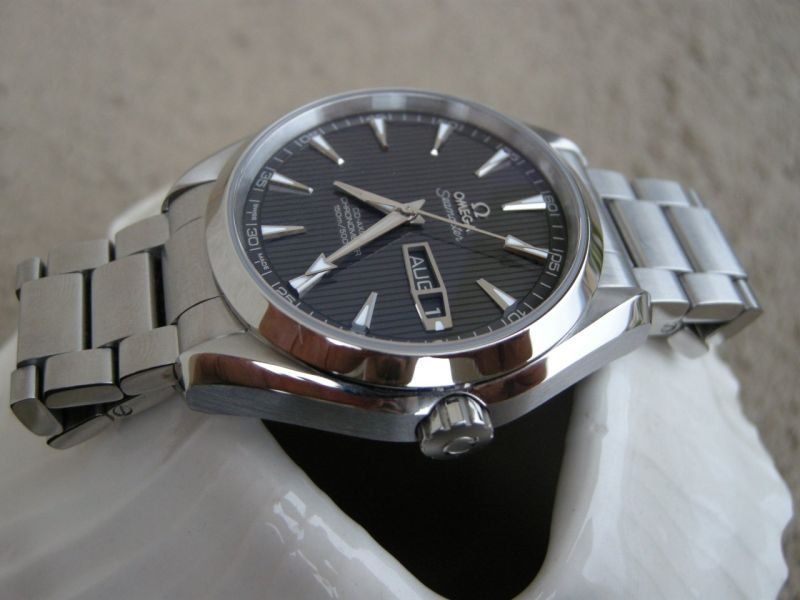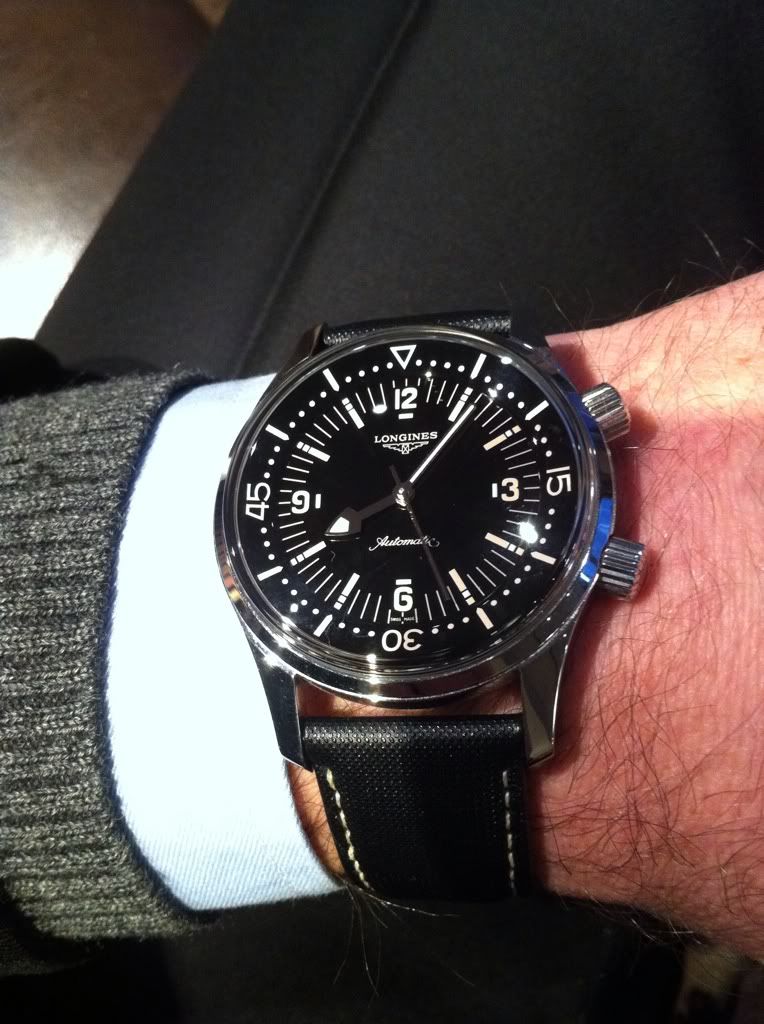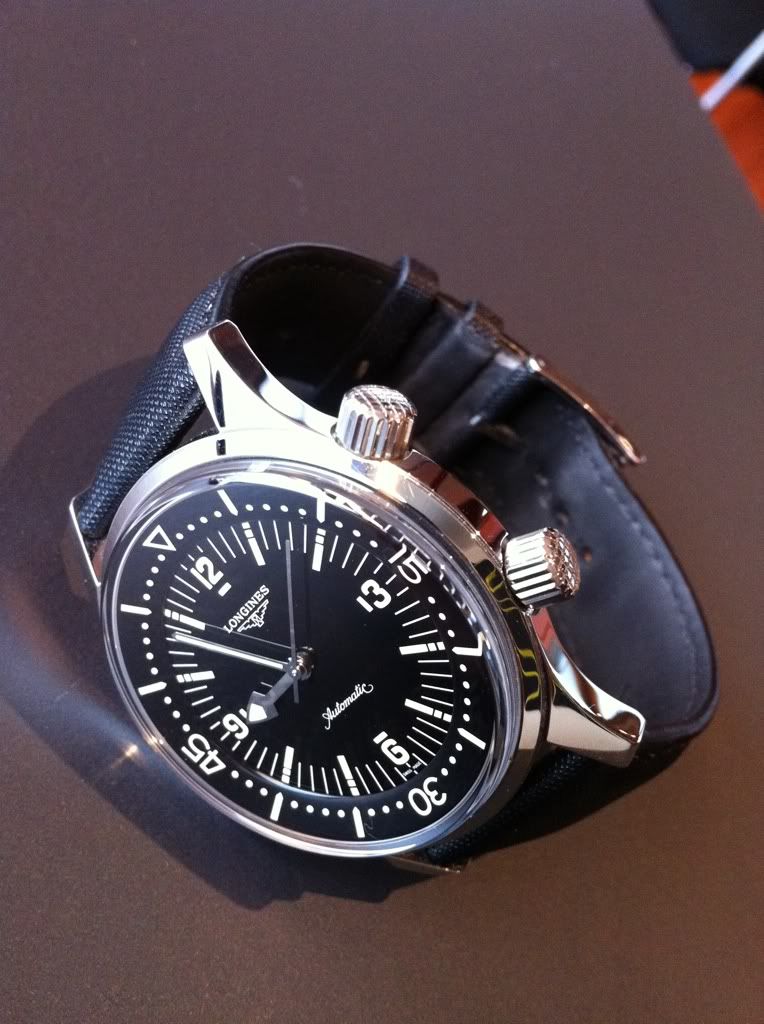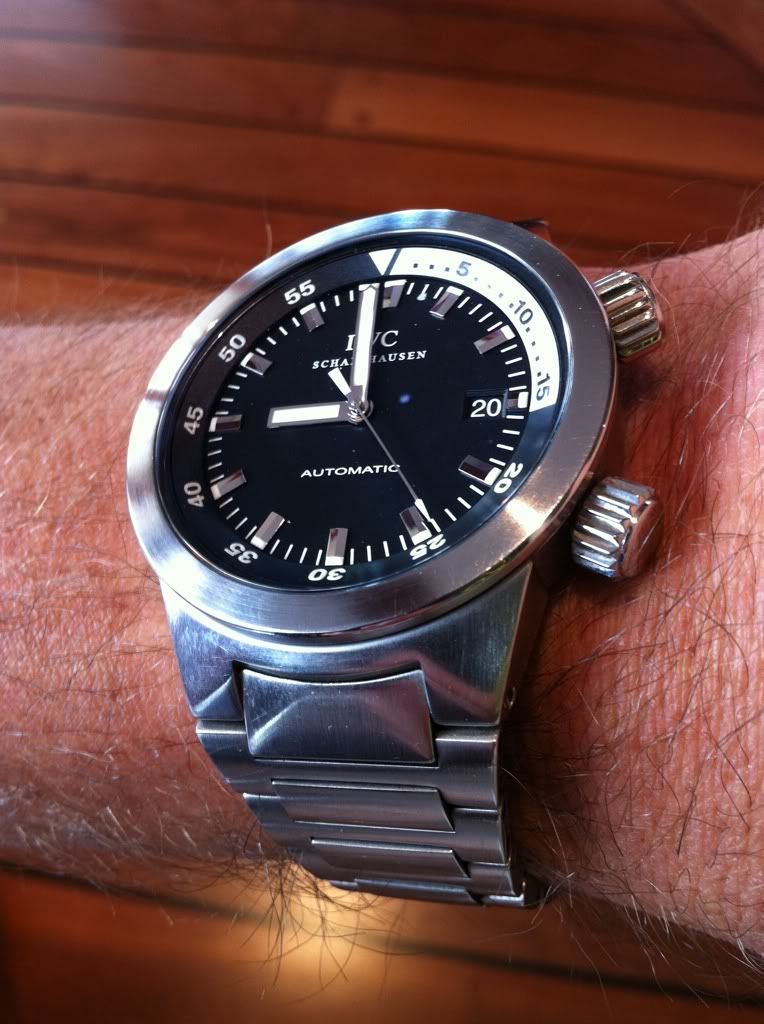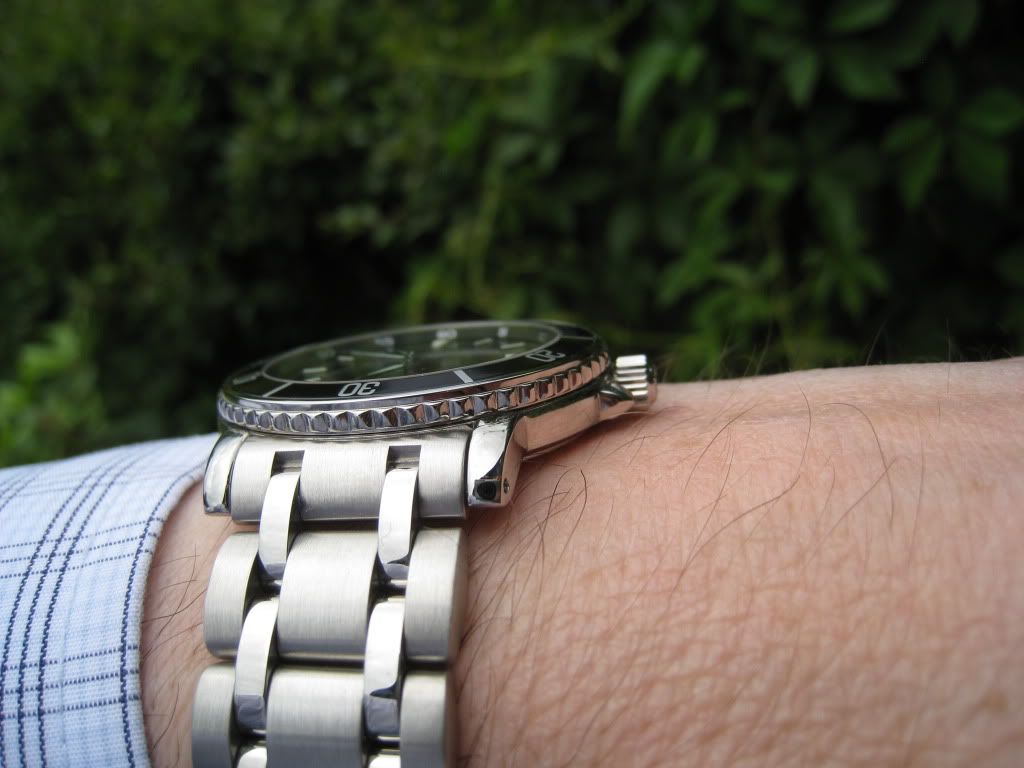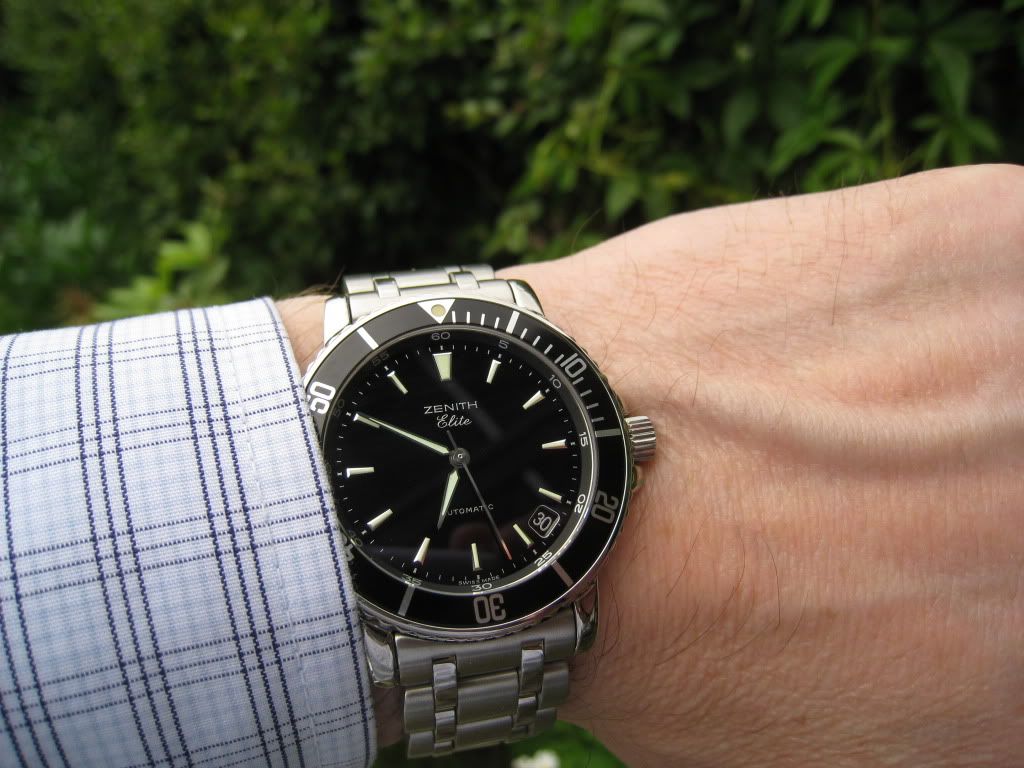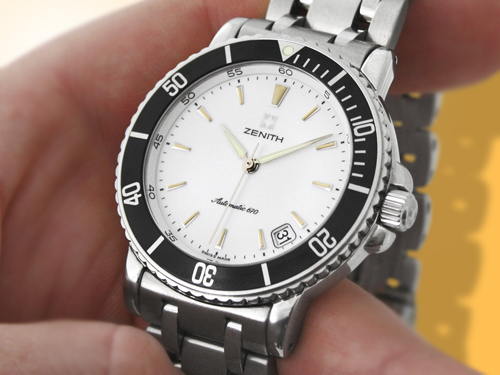Må bare komme med noen spørsmåm her

Hvorfor må klokken være 20atm? Skal du bruke den til dykking? Ser ikke ut på de modellen du selv har kommet opp med at det er det du er på utkikk etter(sett bort i fra submariner selvfølgelig). Du skriver på et par altetnativer at de kun er 15atm..Det er jo klokker som tåler at du bader og herjer i bøtter og spann! Er det at du er redd for at feks en klokke med 15atm fra Omega ikke skal tåle at du bader med den? Er det evt det så har du nok ingen ting å bekymre deg for, de leverer det de skal

Skal du ha en klokke som er ISO 6425 testet må det bli en dykkerklokke som er testet og sertifisert, og det et det nok ikke så mange av da dette koster en del penger, da hver klokke må testes, og flere produsenter kjører derfor tilsvarende eller enda strengere tester etter egne preferanser.
Litt om ISO 6425:
The standards and features for diving watches are regulated by the ISO 6425 - Divers' watches international standard. This standard was introduced in 1996. ISO 6425 defines such watches as: A watch designed to withstand diving in water at depths of at least 100 m and possessing a system to control the time. Diving watches are tested in static or still water under 125% of the rated (water) pressure, thus a watch with a 200-metre rating will be water resistant if it is stationary and under 250 metres of static water. ISO 6425 testing of the water resistance or water-tightness and resistance at a water overpressure as it is officially defined is fundamentally different from non-dive watches, because every single watch has to be tested. Testing diving watches for ISO 6425 compliance is voluntary and involves costs, so not every manufacturer present their watches for certification according to this standard.
ISO 6425 testing of a diver's watch consists of:
Reliability under water. The watches under test shall be immersed in water to a depth of 30 cm ± 2 cm for 50 hours at 18 °C to 25 °C and all the mechanisms shall still function correctly. The condensation test shall be carried out before and after this test to ensure that the result is related to the above test.
Condensation test. The watch shall be placed on a heated plate at a temperature between 40 °C and 45 °C until the watch has reached the temperature of the heated plate (in practice, a heating time of 10 minutes to 20 minutes, depending on the type of watch, will be sufficient). A drop of water, at a temperature of 18 °C to 25 °C shall be placed on the glass of the watch. After about 1 minute, the glass shall be wiped with a dry rag. Any watch which has condensation on the interior surface of the glass shall be eliminated.
Resistance of crowns and other setting devices to an external force. The watches under test shall be subjected to an overpressure in water of 125% of the rated pressure for 10 minutes and to an external force of 5 N perpendicular to the crown and pusher buttons (if any). The condensation test shall be carried out before and after this test to ensure that the result is related to the above test.
Water-tightness and resistance at a water overpressure. The watches under test shall be immersed in water contained in a suitable vessel. Then an overpressure of 125% of the rated pressure shall be applied within 1 minute and maintained for 2 hours. Subsequently the overpressure shall be reduced to 0.3 bar within 1 minute and maintained at this pressure for 1 hour. The watches shall then be removed from the water and dried with a rag. No evidence of water intrusion or condensation is allowed.
Resistance to thermal shock. Immersion of the watch in 30 cm ± 2 cm of water at the following temperatures for 10 minutes each, 40 °C, 5 °C and 40 °C again. The time of transition from one immersion to the other shall not exceed 1 minute. No evidence of water intrusion or condensation is allowed.
An optional test originating from the ISO 2281 tests (but not required for obtaining ISO 6425 approval) is exposing the watch to an overpressure of 200 kPa. The watch shall show no air-flow exceeding 50 μg/min.
Except the thermal shock resistance test all further ISO 6425 testing should be conducted at 18 °C to 25 °C temperature. Regarding pressure ISO 6425 defines: 1 bar = 105 Pa = 105 N/m2. The required 125% test pressure provides a safety margin against dynamic pressure increase events, water density variations (seawater is 2% to 5% denser than freshwater) and degradation of the seals.
Movement induced dynamic pressure increase is sometimes the subject of urban myths and marketing arguments for diver's watches with high water resistance ratings. When a diver makes a fast swimming movement of 10 m/s (32.8 ft/s) (the best competitive swimmers and finswimmers do not move their hands nor swim that fast[2]) physics dictates that the diver generates a dynamic pressure of 50 kPa or the equivalent of 5 metres of additional water depth.[3]
Besides water resistance standards to a minimum of 100 metres (330 ft) depth rating ISO 6425 also provides minimum requirements for mechanical diver's watches (quartz and digital watches have slightly differing readability requirements) such as:[4]
The presence of a time-preselecting device, for example a unidirectional rotating bezel or a digital display. Such a device shall be protected against inadvertent rotation or wrong manipulation. If it is a rotating bezel, it shall have a minute scale going up to 60 min. The markings indicating every 5 min shall be clearly indicated. The markings on the dial, if existing, shall be coordinated with those of the preselecting device and shall be clearly visible. If the preselecting device is a digital display, it shall be clearly visible.
The following items of the watch shall be legible at a distance of 25 cm (9.8 in) in the dark:
time (the minute hand shall be clearly distinguishable from the hour hand);
set time of the time-preselecting device;
indication that the watch is running (This is usually indicated by a running second hand with a luminous tip or tail.);
in the case of battery-powered watches, a battery end-of-life indication.
The presence of an indication that the watch is running in total darkness. This is usually indicated by a running second hand with a luminous tip or tail.
Magnetic resistance. This is tested by 3 expositions to a direct current magnetic field of 4 800 A/m. The watch must keep its accuracy to ± 30 seconds/day as measured before the test despite the magnetic field.
Shock resistance. This is tested by two shocks (one on the 9 o'clock side, and one to the crystal and perpendicular to the face). The shock is usually delivered by a hard plastic hammer mounted as a pendulum, so as to deliver a measured amount of energy, specifically, a 3 kg hammer with an impact velocity of 4.43 m/s. The change in rate allowed is ± 60 seconds/day.
Resistance to salty water. The watches under test shall be put in a 30 g/l NaCl (sodium chloride) solution and kept there for 24 hours at 18 °C to 25 °C. This test water solution has salinity comparable to normal seawater. After this test, the case and accessories shall be examined for any possible changes. Moving parts, particularly the rotating bezel, shall be checked for correct functioning.
Resistance of attachments to an external force (strap/band solidity). This is tested by applying a force of 200 N (45 lbf) to each springbar (or attaching point) in opposite directions with no damage to the watch of attachment point. The bracelet of the watch being tested shall be closed.
Marking. Watches conforming to ISO 6425 are marked with the word DIVER’S WATCH L M or DIVER'S L M to distinguish diving watches from look a like watches that are not suitable for actual scuba diving. The letter L indicates the diving depth, in metres, guaranteed by the manufacturer.
Diver’s watches for mixed-gas diving
Diving at a great depth and for a long period is done in a diving chamber, with the diver spending time alternately in the water and in a pressurized environment, breathing a gas mixture. In this case, the watch is subjected to the pressure of the gas mixture and its functioning can be disturbed. Consequently, it is recommended to subject the watch to a special extra test. ISO 6425 defines a diver’s watch for mixed-gas diving as: A watch required to be resistant during diving in water to a depth of at least 100 m and to be unaffected by the overpressure of the mixed gas used for breathing.
The following specific additional requirements for testing of diver's watches for mixed-gas diving are provided by ISO 6425:
Test of operation at a gas overpressure. The watch is subject to the overpressure of gas which will actually be used, i.e. 125% of the rated pressure, for 15 days. Then a rapid reduction in pressure to the atmospheric pressure shall be carried out in a time not exceeding 3 minutes. After this test, the watch shall function correctly. An electronic watch shall function normally during and after the test. A mechanical watch shall function normally after the test (the power reserve normally being less than 15 days).
Test by internal pressure (simulation of decompression). Remove the crown together with the winding and/or setting stem. In its place, fit a crown of the same type with a hole. Through this hole, introduce the gas mixture which will actually be used and create an overpressure of the rated pressure/20 bar in the watch for a period of 10 hours. Then carry out the test at the rated water overpressure. In this case, the original crown with the stem shall be refitted beforehand. After this test, the watch shall function correctly.
Marking. Watches used for mix-gas diving which satisfy the test requirements are marked with the words "DIVER’S WATCH L M FOR MIXED-GAS DIVING". The letter L indicates the diving depth, in metres, guaranteed by the manufacturer. The composition of the gas mixture used for the test shall be given in the operating instructions accompanying the watch.
Most manufacturers recommend divers to have their diving watch pressure tested by an authorized service and repair facility annually or every two to three years and have the seals replaced.

